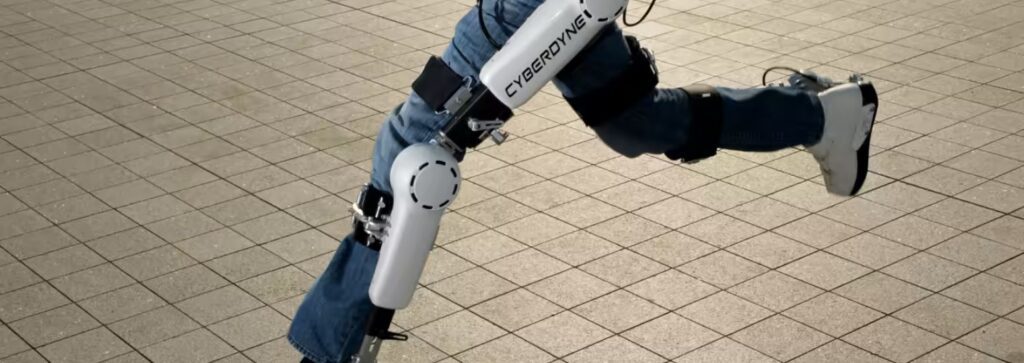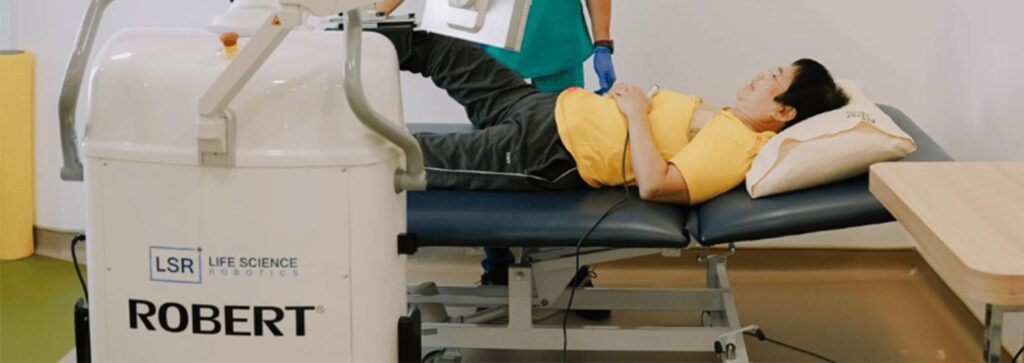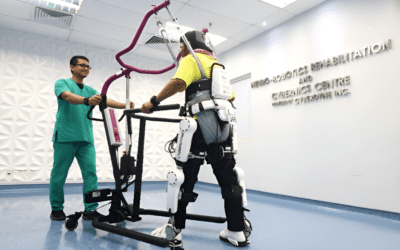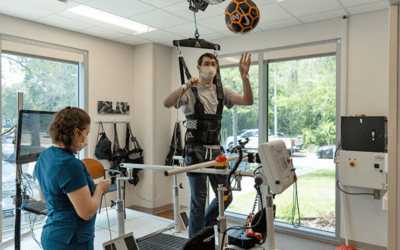Neuro Robotics is a powerful tool for testing brain theories and increasing our understanding of neuroscience. The robot controller is modelled after a certain aspect of the nervous system.
This concept refers to all robots created to interact with or simulate human neurological systems.
The idaea of Neuro robotics for Rehabilitation dates back to the beginning of the previous century, and it is up to this day rapidly expanding.
For a while now, rehabilitation hospitals have been incorporating robotics technologies into the daily treatment schedule of many patients. These interventions hold a greater promise than just replicating traditional therapy as they allow therapists to specify and monitor movement features such as speed, direction, amplitude, and joint coordination patterns and introduce controlled perturbations into therapy.
Neurological diseases causing motor/cognitive impairments are among the most common causes of adult-onset disability. More than one billion people are affected worldwide, and this number is expected to increase in upcoming years, because of the ageing population.
To fully realise the potential of Robotic devices in Neurorehabilitation, it is necessary to understand better the specific aspects of movement that should be facilitated in rehabilitation…
Robots for Neurorehabilitation are designed to support the administration of physical exercises to the upper or lower extremities, to promote neuro-motor recovery.
The technological support of robotic-based therapy, non-invasive brain stimulation, and neural interfaces can aid rehabilitation therapy.
Robotic Rehabilitation can reduce the burden of therapists by automating tedious and labour-intensive therapy and by adapting to the specific needs of the targeted individuals. Additionally, it can offer a multisensory rehabilitation experience when combined with other technologies such as virtual and augmented reality.
This way it can provide additional sensory feedback to facilitate neuroplasticity and become more intuitive for individuals with cognitive deficiencies. Robotic technologies have demonstrated a clear potential for rehabilitation and daily use.
Robotics in Physical Therapy

Robotic technology has gained significant traction in various industries, and physical therapy is no exception. By incorporating robotics into rehabilitation engineering, therapists can now provide targeted and personalised treatment plans, resulting in quicker recoveries and improved patient outcomes.
Advantages of Robotic Rehabilitation:
Targeted Therapy: With robotic devices, therapists can precisely target specific muscle groups and joints, ensuring that patients receive therapy in the areas that need it most.
Efficient: Robotic systems can perform repetitive tasks with consistent precision and minimal fatigue. This allows therapists to focus on analysing patient progress and adjusting treatment plans accordingly.
Improved Safety: By controlling movement and ensuring proper alignment, robotic devices minimise the risk of injury during therapy sessions, providing a secure environment for patients to heal.
Detailed Data: Robotics technology captures detailed data during each session, providing therapists with objective measurements of a patient’s progress. This data-driven approach enables therapists to make informed decisions and tailor treatment plans to individual needs.
The Versatility of Robotics enables their application in several aspects of physical therapy…
- Robotic Exoskeletons:
Exoskeletons are wearable robotic devices that aid individuals with impaired mobility to regain strength and independence. These devices provide support and assistance, enabling patients to perform movements that would otherwise be challenging or impossible.
Key points-
- Robotic exoskeletons can assist patients with neurological disorders like stroke or spinal cord injuries, enhancing their mobility and gait.
- These devices enable repetitive movement training, which is essential for retraining the nervous system and promoting neuroplasticity.
- Exoskeletons promote early mobilisation by reducing the burden on therapists and allowing patients to engage in active movement sooner in their recovery journey.
- Robotic-Assisted Therapy:
Robotic-assisted therapy involves the use of robotic devices to guide and support patients during therapeutic exercises. These devices can adjust resistance levels, track progress, and provide real-time feedback, making each session more engaging and productive.
Key points-
- Robotic-assisted therapy is beneficial for patients with orthopaedic injuries or conditions like arthritis, as it helps improve joint function and range of motion.
- These devices can precisely measure and control resistance, enabling therapists to tailor exercises to a patient’s specific capabilities and needs.
- The feedback provided by robotics facilitates self-assessment and encourages patients to actively participate in their rehabilitation process.
Integrating Technology into Rehabilitation Programmes

During robotic gait training, patients are assisted with body-weight support and provided with physical guidance from a robotic device to move their legs into a correct gait pattern.
One common feature of rehabilitation robots is that they are equipped with movement and/or force sensors so that they integrate functionalities both for the assessment (quantify users’ movements and exchanged forces) and the treatment (administer highly reproducible, repetitive exercise protocols, and interaction modalities).
Recovery:
Evidence-based research shows patients are making major strides, faster, when advanced robotics are integrated into rehabilitation treatment programmes. That’s especially true for people recovering from a stroke, spinal cord or brain injury.
The use of Neuro Robotic devices in providing rehabilitation therapy following neurological injuries is growing fast.
So, connect with us at www.rehabmodalities.com to learn more about our rehabilitation therapy.
To know more write to us: info@rehabmodalities.com



